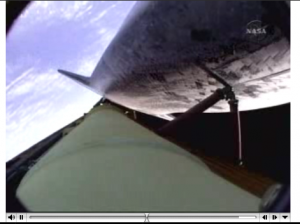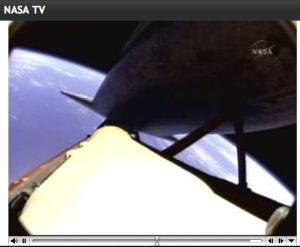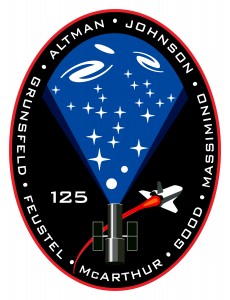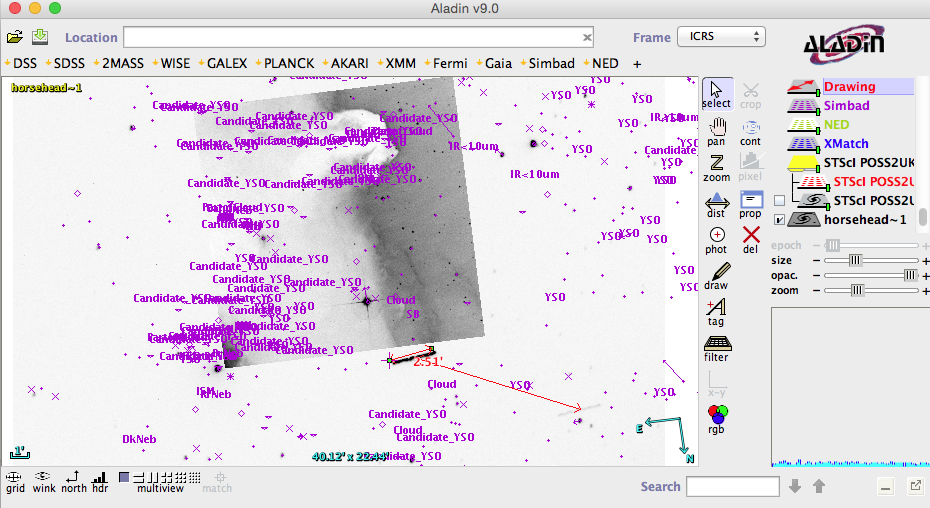Atlantis STS125 or the final visit to Hubble Space Telescope
Today: proposal writing for Lick Observatory Shane telescope
May 6, 2009Celebrating Science at SETI Institute
May 13, 2009Right now, I am watching the launch of Atlantis Shuttle STS-125) in live on NASA TV. I rarely watch the launch of the shuttles mostly for lack of time and information about the goals of the mission, thus interest. This launch is extremely important for astronomers since it is the 4th service mission (SM4) for the Hubble Space Telescope. It is also the final visit to this space telescope.
This mission aims at installing 2 new instruments (WFC3 and COS), repairing 2 existing cameras (STIS and ACS) and updating the telescope with new gyroscopes (to position itself), new batteries, Fine Guider System (to guide during an exposure) and so on… This is definitely the most important mission for our community since it will extend the lifetime of Hubble Space telescope and makes it competitive compared with current instruments available on the ground.
As you may already know reading my blog I am mostly a ground-based observer even if I am using HST and Spitzer Telescope occasionally. These space telescopes are extremely expensive compared to ground-based telescopes. I read (*need reference reference**) that the total budget of the 2m-telescope HST is around 10 billions of dollars spread over 19 years, each SM mission costs around 1 B$. For comparison, the VLT observatory composed of four 8 m telescope costs “only” 700 million of dollars (400M$ construction + 300M$ maintenance) after 8 years of use (I will write a better post with detailed numbers in a few days). However these space telescopes can provide UNIQUE data, for instance, HST give us access to the UV wavelength range. From the ground, because of the absorption of our Earth atmosphere, the famous ozone layer which protects us absorbing the dangerous UV light from the Sun, we are blind in the wavelength range. That meas that we can’t see energetic atomic transitions in UV which could help to estimate the composition and temperature of galaxies, stars and atmosphere of planets.
Amazing, over the time I needed to write this blog, the Atlantis Shuttle reaches its orbit and I can see on the TV a fantastic view of Earth curvature. It seems to be going well and a press conference is scheduled in a few minutes. I am attaching you a few capture screens and the logo of the STS-125 mission which clearly show that this mission is designed for astronomy. I should also mention that this mission has enormous human component, I am thinking for instance to the astronaut crew led by the veteran astronaut Scott D. Altman who already had a mission to the HST (here a picture of the team) and also for the people who design and build the instruments and design this complex mission.
I unfortunately need to go back to my ESO proposal reviewing (only 50% done, fascinating…) so I will not spend too much time on the blog today. In the next few days I will try to keep you posted with updates on the Service Mission. On Wednesday early afternoon, the Shuttle should reach the Hubble Space Telescope.
Enjoy,
F.






1 Comment
i’m working with the WFC3 team at hubble headquarters, and we’ll be keeping our fingers crossed that the instrument gets installed ok and passes its initial tests on thursday !!